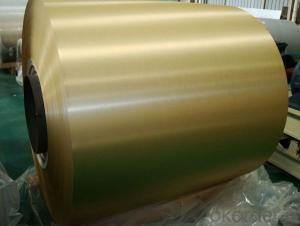Aluminum foil, a material often overlooked in the realm of art, has the potential to transform the way we perceive light and color. Its reflective properties and malleable nature make it an ideal medium for artists to explore and experiment with. In this article, we will delve into the world of aluminum foil art, discussing its history, techniques, and the impact it has on the art community.
The Unconventional Material
Aluminum foil may not be the first thing that comes to mind when you think of art supplies, but its versatility and affordability make it an attractive option for artists of all levels. From its humble beginnings as a means of preserving food, aluminum foil has evolved into a creative tool that can be molded, crumpled, and manipulated in countless ways.
A Brief History
The history of aluminum foil dates back to the late 19th century when it was first introduced as a way to protect food from spoilage. However, it wasn’t until the 20th century that artists began to recognize its potential as an artistic medium. Early adopters of aluminum foil in art included pop artists like Andy Warhol, who used it to create unique reflections and textures in his work.
Techniques and Methods
Aluminum foil art can take many forms, from simple origami-like creations to intricate sculptures. Some common techniques include:
– Crinkle and Crease: By crumpling and creasing the foil, artists can create texture and depth in their work.
– Fold and Cut: Origami techniques can be applied to aluminum foil, allowing for the creation of complex shapes and patterns.
– Layering: Stacking multiple layers of foil can add dimension and create a sense of movement.
– Sculpting: Aluminum foil can be shaped and molded into three-dimensional forms, making it an ideal material for sculptures.
Capturing Light and Color
One of the most captivating aspects of aluminum foil art is its ability to reflect and refract light. This property allows artists to create pieces that change appearance depending on the viewer’s perspective and the surrounding environment. The interplay of light and color can evoke a range of emotions and create a dynamic visual experience.
Personal Expression and Emotion
Aluminum foil art offers a unique opportunity for personal expression and emotional exploration. Artists can use the material to convey their feelings and experiences, using the reflective qualities of the foil to symbolize introspection and self-reflection. The malleability of the material also allows for a more organic and fluid representation of emotions, as opposed to the rigidity of traditional art mediums.
The Impact on the Art Community
The use of aluminum foil in art has had a significant impact on the art community, challenging traditional notions of what constitutes art and encouraging artists to think outside the box. It has also opened up new avenues for collaboration and experimentation, as artists from different disciplines can come together to explore the possibilities of this versatile material.
Environmental Considerations
While aluminum foil is a relatively inexpensive and accessible material, it is important to consider its environmental impact. Aluminum is a non-renewable resource, and the production process can have negative effects on the environment. However, aluminum is also recyclable, and many artists are finding ways to incorporate recycled foil into their work, promoting sustainability and reducing waste.
Conclusion
Aluminum foil art is a testament to the boundless creativity of artists and the endless possibilities that can be found in unexpected places. Its reflective properties and malleable nature offer a unique canvas for exploring light, color, and emotion. As the art community continues to embrace and innovate with this unconventional material, we can expect to see even more captivating and thought-provoking works in the future.

